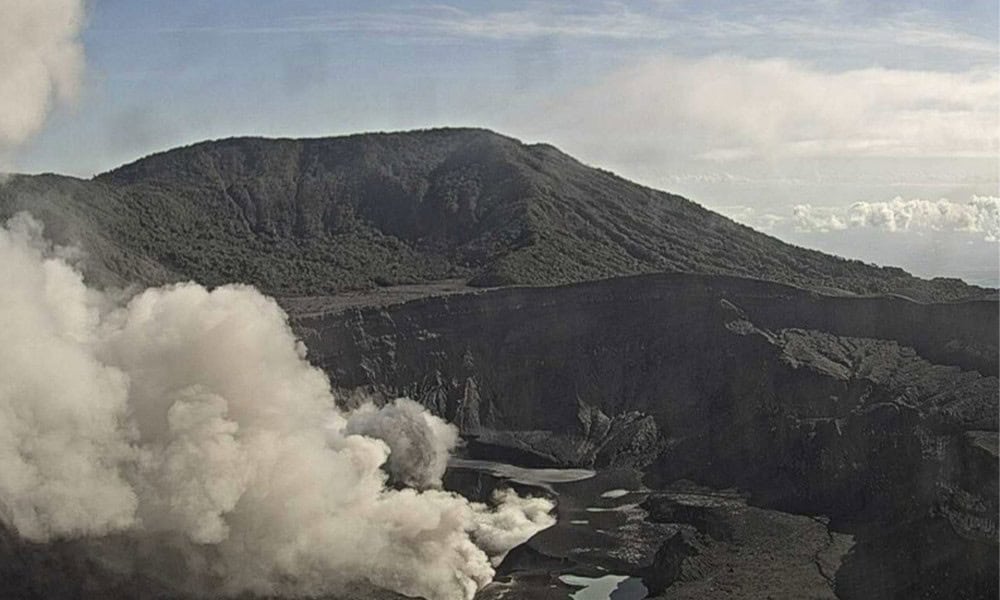The Costa Rican National Emergency Commission (CNE) declared a red alert for Poás Volcano National Park, after reporting a sustained uptick in eruptive activity. Authorities noted that this week’s eruptions produced ash columns surpassing 4,000 m in height, with some plumes reaching up to 4,500 m above the crater rim—the most intense explosions of the current volcanic eruptions.
Following recommendations from its Technical Advisory Committee—comprising Ovsicori-UNA, RSN-UCR, UNA’s Atmospheric Chemistry Laboratory, and SINAC—the CNE simultaneously raised alert levels in adjacent areas. Grecia and Sarchí moved to orange, while Río Cuarto, Zarcero, Naranjo, Poás, and Alajuela were placed under yellow alert due to broader ash and gas dispersion as well as elevated lahar risk.
Experts point out that on both April 21 and April 23, Poás produced especially energetic eruptions, with gas-and-ash columns climbing as high as 4,500 m above the crater—a dramatic escalation compared with early-April activity when columns averaged 1,500 m. The volcano remains at Alert Level 3 on the four-level national scale, and its Aviation Color Code stays at Orange, indicating continued hazardous airborne ash for aviation
Under red alert, entry to Poás Volcano National Park is strictly prohibited. Authorities warn of extreme hazards: ballistic blocks, high-concentration gas emissions, and rapid ash accumulation that can collapse structures and overwhelm emergency responders. SINAC has closed all park access roads and facilities indefinitely, urging tourists and park staff to heed the ban.
In the orange-alert areas—especially the Toro Amarillo district of Sarchí—officials highlight the threat of lahars. Heavy rainfall atop the volcano could add large volumes of ash and debris down the Desagüe, Anono, Gorrión, and Agrio rivers, endangering riverside communities. Residents are told not to approach or drink from these waterways until conditions stabilize.
For areas under yellow alert, residents and tourists alike should expect intermittent ashfall and volatile gas concentrations as wind patterns shift. The CNE recommends that everyone—particularly those with asthma or other respiratory conditions—wear masks (ideally N95-grade), seal doors and windows with damp cloths, and limit time outdoors. Local health clinics have been advised to prepare for increased patient visits related to ash inhalation and irritation.
Historical context underscores the economic stakes for Costa Rica tourism in this area: during a 2017 eruptive phase, Poás remained closed for over a year, hurting nearby communities of important tourism revenue and causing millions in local losses. Many businesses and lodges around Alajuela Province depend heavily on steady visitors to the volcano. Let’s hope this eruption phase ends quickly and that everyone stays safe.






